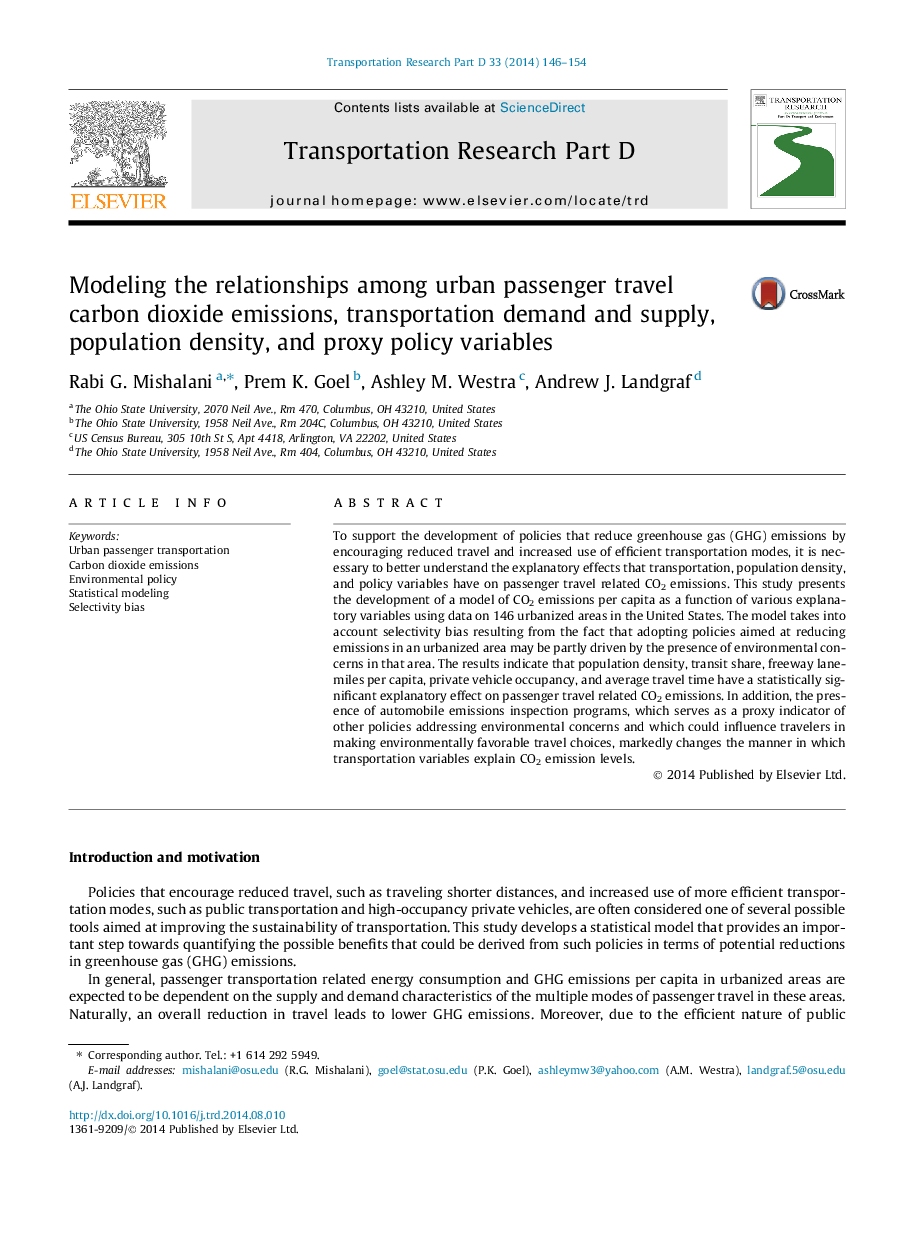| کد مقاله | کد نشریه | سال انتشار | مقاله انگلیسی | نسخه تمام متن |
|---|---|---|---|---|
| 1065700 | 1485890 | 2014 | 9 صفحه PDF | دانلود رایگان |
• An aggregate model of passenger travel CO2 emissions in US urban areas is developed.
• The explanatory effects of several transport and population density variables are quantified.
• The role of environment enhancing policies is captured via a proxy variable.
• The presence of selectivity bias resulting from such policies is accounted for.
To support the development of policies that reduce greenhouse gas (GHG) emissions by encouraging reduced travel and increased use of efficient transportation modes, it is necessary to better understand the explanatory effects that transportation, population density, and policy variables have on passenger travel related CO2 emissions. This study presents the development of a model of CO2 emissions per capita as a function of various explanatory variables using data on 146 urbanized areas in the United States. The model takes into account selectivity bias resulting from the fact that adopting policies aimed at reducing emissions in an urbanized area may be partly driven by the presence of environmental concerns in that area. The results indicate that population density, transit share, freeway lane-miles per capita, private vehicle occupancy, and average travel time have a statistically significant explanatory effect on passenger travel related CO2 emissions. In addition, the presence of automobile emissions inspection programs, which serves as a proxy indicator of other policies addressing environmental concerns and which could influence travelers in making environmentally favorable travel choices, markedly changes the manner in which transportation variables explain CO2 emission levels.
Journal: Transportation Research Part D: Transport and Environment - Volume 33, December 2014, Pages 146–154
